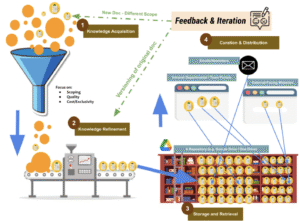Teachers don’t need another tab—they need fewer clicks and more context. That’s why Microsoft 365 LTI for K–12 caught my eye this week: it pulls assignments, Classwork, and AI-powered authoring directly into the LMS teachers already live in, instead of bouncing them between systems.
Read more here: https://techcommunity.microsoft.com/blog/educationblog/whats-new-in-microsoft-edu—back-to-school-august-2025/4425287.
What Microsoft shipped (and why it matters). Microsoft 365 LTI is in public preview for Canvas, Schoology, Blackboard, Brightspace, and Moodle, with GA slated for fall. Alongside that, Learning Zone (public preview) helps teachers spin up interactive lessons, and Copilot adds educator features like rubric/instructions generation, standards alignment, and suggested feedback. The idea is simple: keep the work in one flow so planning, assigning, and responding happen without tool-flipping.
From tool sprawl to task flow. We’ve asked educators to stitch together SIS rosters, LMS assignments, and productivity tools on their own. Microsoft 365 LTI for K–12 narrows that gap by bringing Assignments and Classwork data into the same pane where teachers create and grade. That reduces context switching (hello, time savings) and improves data quality because the “source of truth” travels with the task.
Data, standards, and the road ahead. Two details signal maturity: standards alignment (via EdGate) and an Insights API for Reading Coach data. Standards alignment makes AI-assisted content creation less generic and more instructionally grounded. The Insights API matters because districts can wire these artifacts into existing analytics without waiting on vendor reports. Neither solves interoperability alone—but both point the right direction.
Bottom line. If your teachers live in Canvas or Schoology and your IT team lives in “integration tickets,” piloting Microsoft 365 LTI for K–12 is a smart move. Start small (one grade band or PLC), measure time saved and assignment completion, and keep your feedback loop tight with IT so configuration doesn’t stall adoption. The win isn’t novelty; it’s smoother, saner workflows that give teachers time back when it counts.
Need help tightening your LMS + productivity stack, or measuring the impact on teacher time? I consult with K–12 networks on SIS/LMS interoperability, analytics, and change management. Let’s make your stack work for teachers, not the other way around. https://consulting.jayraguda.com
Love these insights? Subscribe to Dr Jay’s Weekly K–12 Systems Spotlight on LinkedIn: https://www.linkedin.com/build-relation/newsletter-follow?entityUrn=7336430863393411075




